To be sure that mix of qualities is bound to impose some compromise in at least some, if not all of those features. Which begs the question, did Onyx achieve that? It depends on what your priorities are, but based on the response of the alpine touring market so far, that would be a big en-oh, as in NO!
Did G3 misread the market, or simply not execute well? I’ll venture to say a bit of both, but perhaps more importantly, maybe they had the right idea, but poorly targeted marketing. Their reputation is with core backcountry skiers vis-a-vis the Targa binding, skis and climbing skins. After using the Onyx it appears to be perfectly aimed at the budding backcountry aficionado who doesn’t need to be fanatical about weight, doesn’t want any tech binding fiddle factor, and wants to trim excess binding blubber. IOW – not the hardcore backcountry skier – not yet anyway.
Does that mean Onyx doesn’t have any redeeming features? Hardly. Allow me to explain.
Fiddle Factor
Stepping in at the toe on the Onyx has received a bad rap from the get go and it is high time to set the record straight. G3’s Onyx earned demerits among the AT faithful when it was introduced for being the heaviest tech binding on the market, with a toe piece that requires you to actively hold the toe jaws open with a ski pole while aligning your boot. The problem was, it took too much force and there were no brakes to hold the ski still.
Switching Modes
Matters of Weight
One of the factors contributing to the higher than average weight of the Onyx is the use of a plate mounting system which has benefits, but not ones that are easily tabulated in a comparison spreadsheet like weight. The plate mounting system allows you to adapt to different sized boots over 3–4 sizes compared to two sizes with most Dynafit bindings. Perhaps more valuable is the ability to easily swap the Onyx between multiple pairs of skis outfitted with the mounting plate.
The beef with weight might easily be addressed by trimming the mounting system on the Onyx. Unless you use that mounting system on a second pair it only offers a potential advantage, and until you do, a weighty disadvantage.
If you’re not in a rando race where ounces matter, nor can you see yourself lugging three pounds of binding per foot up the hill, you can chop that significantly and enjoy Tech caliber skinning with Onyx. Even though the Onyx may weigh more than a Dynafit, it’s lighter than the next closest contender and also eliminates the lifting of the binding heel piece with each step. The touring efficiency may be less than other tech bindings, but it’s in a different league altogether compared to plate bindings.
Downhill Performance
One of the factors that remains a concern with all tech bindings is their ability to release reliably when needed, and not fold when you want them to hold. In that realm Onyx is a solid notch up from the standard tech binding offerings. The difference is due to a combination of factors. First and foremost are the toe jaws that want to be closed, which eliminates the ability for them to pop open with enough lateral stress and improves return to center force, the core component of alpine bindings exhibiting good elasticity and immunity from pre-release.
This video was made to show off G3’s District ski, but the invisible binding is the Onyx which holds on despite some pretty aggressive skiing.
Quality Issues
To date there have been some issues with Onyx, so you are cautioned to beware on the used market. The pins in the toe have been changed from 5 mil to 6 millimeters in diameter to give them more muscle in their bite, and strength to prevent breaking. The plastic on the climbing posts has been upgraded as well, again, to reduce breakage. How can you tell? The climbing posts were a light gray, they’re a dark gray on the improved version.
And they still don’t tele for squat, but then, what AT binding does?
Conclusion
If you’re standing on the fence about making the leap from a plated passport binding for jaunts in- and out-of-bounds, and you have a pair of boots with tech fittings then you owe it to yourself to give Onyx a closer look. It skins great, skis well, is easy to operate, and can be swapped among skis.
Why would you chose Onyx over a plate binding? To save weight and improve touring efficiency. The closest plate binding in weight and functionality is Fritschi’s Freeride. By comparison the Onyx is lighter, laterally more rigid, and it eliminates lifting the entire binding when touring.
Why Onyx over lighter weight tech bindings? It’s easier to latch in to, the mode switch is easier to operate, and it’s easier on the budget (for comparable features). Even though the retail price is equal to plate bindings, its unfair reputation has pushed the street price down to more palatable levels.
G3
MSRP: $490
Weight/binding w/brake: 1 lb., 15 oz. (879 g)
Brake widths: 85mm, 95mm, 110mm, 130mm
Crampons available: 85mm, 95mm, 110mm, 130mm
Release Range: 6 – 12
Ruby
MSRP: $490
Weight/binding w/brake: 1 lb., 14.5 oz. (869 g)
Brake widths: 85mm, 95mm, 110mm
Crampons available: 85mm, 95mm, 110mm
Release Range: 5 – 10
Related Posts
Onyx reviewed w/telemark eyes.
Toe Pins breaking w/Onyx (old news)
© 2012

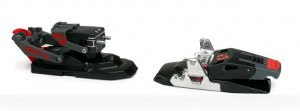
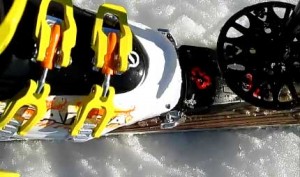
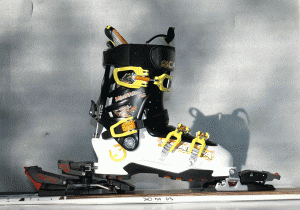
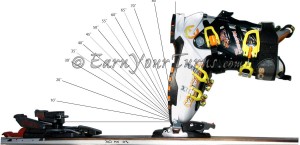

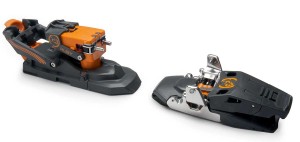
2 comments
5 pings
Not exactly a ringing endorsement. Fair or not, most people are going to look at these and see a heavy Dynafit. Trying to split between Dynafit and Duke is not proving to be fertile ground.
Depends on your perspective. If weight really matters, duh, Onyx is not the way to go. If you’re just trying to shave weight from more than 6 to less than 4 pounds, with more efficient touring and better retention for turning, Onyx is a valid option. How many people does that address? Honestly, I think quite a few. The problem is, nearly everyone dismisses Onyx based on a weight comparison alone – just like many do with the Fritschi Freeride. But I notice you’re a Freeride user so there has to be some value to the middle ground, eh? Anyway, the point is, I don’t think Onyx is the dog so many make it out to be. It isn’t super light, but it has some appealing facets.
[…] and ATK, began creating their own anorexic versions of an already minimalist binding design. Only G3 dared to offer any significant changes, like more elasticity in the toe, and a heel unit that […]
[…] low-angle, circuitous traverse. Fritschi Diamir obliges with a heel unit that retracts (similar to G3′s Onyx) by simply pushing down on a lever at the rear of the heel, or lifting it back up to lock it again. […]
[…] 2-pin tech toes I’ve used – Dynafit’s TLT, Vertical, Radical and Beast, G3′s Onyx and Ion, the La Sportiva/ATK, Plum, or Fritschi’s Vipec, — the OMG TTS toe requires the […]
[…] Posts: A telemarkers view of Onyx Enzo review Onyx review Ion 1st Look Lou’s view on […]
[…] engineers at G3 have been hard at work the past three years taking what they learned with Onyx and applying it to the classic tech paradigm to come up with Ion. The first thing you’ll […]